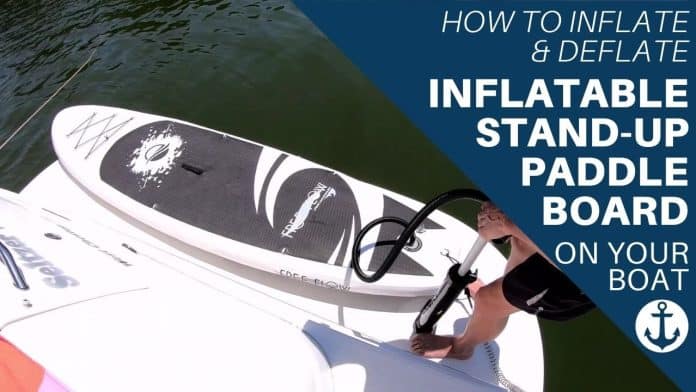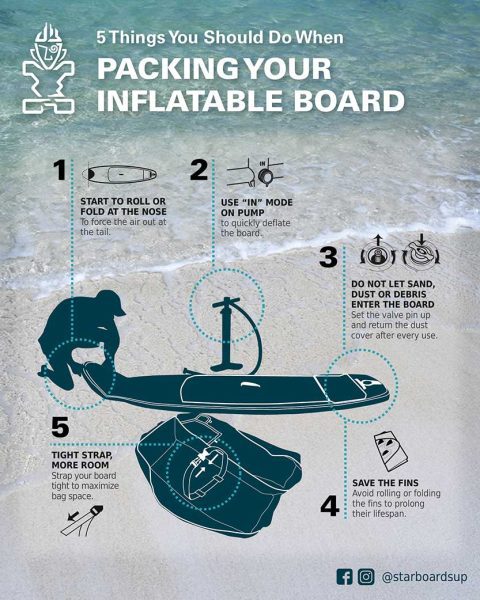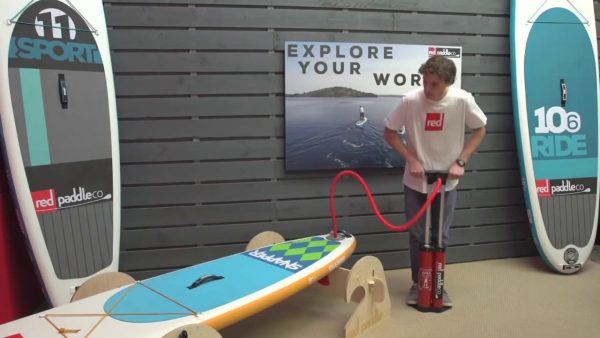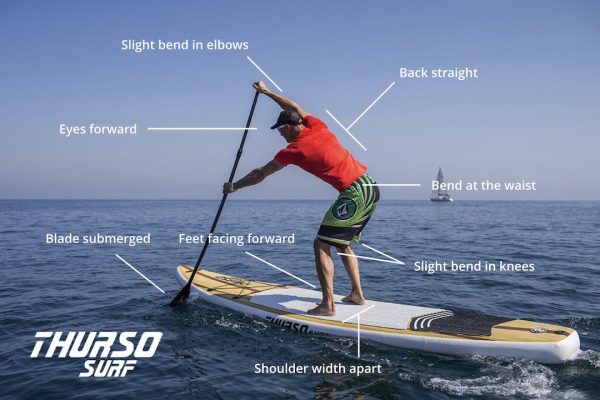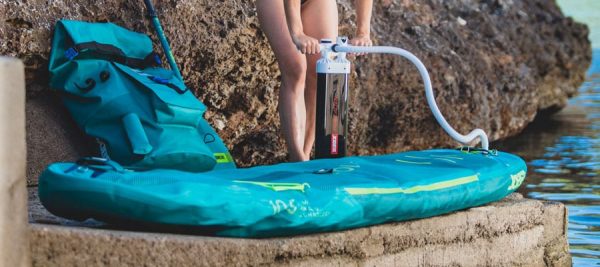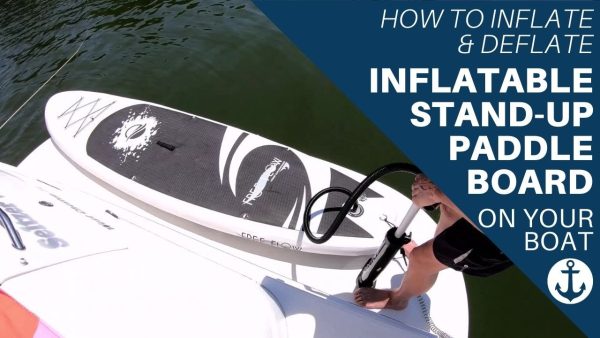Are you an avid paddle boarder looking to optimize your pumping techniques? If so, you’ve come to the right place! In this article, we will explore the most efficient way to pump a paddle board, allowing you to glide effortlessly through the water and make the most out of your paddling adventures. So, grab your board and let’s dive into the world of pumping techniques!
Choosing the Right Pump
Types of pumps for paddle boards:
When it comes to choosing the right pump for your paddle board, there are a few options available. The most common types of pumps for paddle boards are hand pumps, electric pumps, and foot pumps. Hand pumps are the most traditional and commonly used option. Electric pumps are a convenient choice for those who want a quicker and easier inflation process. Foot pumps, on the other hand, provide a hands-free pumping experience.
Considerations when selecting a pump:
Before making a decision, there are a few important factors to consider. The first consideration is the size of your paddle board. Larger boards may require a pump with higher pressure capabilities. The second consideration is the intended use of your paddle board. If you plan on inflating your board frequently or need to inflate multiple boards, an electric pump may be a better choice. Lastly, consider your personal preferences and budget. Some pumps may have additional features or be more expensive, so choose the one that aligns with your needs.
Popular pump brands:
There are several reputable pump brands in the market that specialize in paddle board pumps. Some of the popular brands include Bravo, NRS, Red Paddle Co, and Sea Eagle. These brands offer a range of pumps with different features and price points, ensuring there is an option for every paddler.
Preparing Your Paddle Board
Inflate your paddle board to the recommended PSI:
Before you hit the water, it’s crucial to inflate your paddle board to the recommended PSI (pounds per square inch). Each paddle board has a specific PSI range recommended by the manufacturer. Underinflated boards can result in poor performance and stability, while overinflating can lead to damage. Using a pressure gauge, ensure that your board reaches the optimal PSI to ensure a safe and enjoyable paddling experience.
Attach the pump hose to the paddle board:
Once you have chosen the appropriate pump, it’s time to attach the pump hose to the paddle board’s valve. Most paddle boards have a standard valve design that is compatible with various pump hoses. Simply connect the hose securely to the valve, ensuring there are no air leaks. This step is essential to maintain efficient airflow during the inflation process.
Secure the pump to a stable surface:
To prevent any unnecessary movement or instability while pumping, it’s important to secure the pump to a stable surface. Whether you are using a hand pump, electric pump, or foot pump, make sure the pump is placed on a flat and steady ground. This will allow you to exert proper force without any interruptions, resulting in a more efficient and effective inflation process.
This image is property of greenwatersports.com.
Pumping Techniques
Using your full body for efficient pumping:
Pumping a paddle board requires more than just arm strength; it involves utilizing your entire body to maximize efficiency. Start by standing in a stable position with your feet shoulder-width apart. As you pump, engage your core muscles and use your legs to generate power. This will not only relieve strain from your arms but also distribute the effort evenly throughout your body, leading to a more efficient inflation process.
Maintaining a consistent rhythm:
Consistency is key when it comes to pumping your paddle board. Establishing a steady rhythm helps to optimize efficiency and avoid unnecessary fatigue. Find a pace that works for you and maintain a consistent pumping motion throughout the inflation process. Counting your strokes can also be helpful to ensure you are sustaining a regular rhythm, resulting in a well-inflated paddle board.
Applying steady pressure:
To achieve optimal inflation, it is important to apply steady pressure during each pump stroke. Avoid using excessive force, as it may cause strain or damage to the paddle board. Instead, focus on maintaining consistent pressure throughout each pump stroke. This will ensure a controlled and even flow of air into the board, leading to a balanced inflation.
Avoiding excessive force:
While it may be tempting to pump as fast as possible to shorten the inflation time, it is important to avoid using excessive force. Applying too much force can result in overinflation and potential damage to the paddle board. Take your time and focus on maintaining a steady and controlled pumping technique. By avoiding excessive force, you will prolong the lifespan of your paddle board and ensure a safer paddling experience.
Proper Body Position
Maintaining proper posture:
Maintaining a proper posture while pumping your paddle board is crucial for overall efficiency and comfort. Stand up straight with your shoulders relaxed and your back upright. Avoid slouching or leaning excessively forward, as this can restrict airflow and strain your muscles. By maintaining proper posture, you will be able to utilize your body’s full potential and avoid unnecessary discomfort.
Engaging your core:
Engaging your core muscles is another important aspect of proper body position. By activating your core, you stabilize your body and provide a solid base for efficient pumping. Engaging your core also helps to transfer power from your legs to your upper body, allowing for a more balanced and effective pumping technique. Remember to keep your abdominal muscles activated throughout the entire pumping process.
Positioning your feet:
Proper foot placement contributes to stability and balance while pumping your paddle board. Keep your feet shoulder-width apart, distributing the weight evenly between both feet. This stance provides a stable foundation and prevents any imbalance or unwanted movement. By positioning your feet correctly, you can maximize your pumping efficiency and maintain a controlled inflation process.
Distributing weight evenly:
When pumping your paddle board, it is essential to distribute your weight evenly. Avoid placing excessive weight on one foot or leaning towards a particular direction as this may disrupt the stability of your pumping motion. A balanced weight distribution allows for a consistent and controlled flow of air, ensuring a well-inflated paddle board.
This image is property of i.ytimg.com.
Pumping in Stages
Initial inflation:
When starting the inflation process, begin with a few initial pumps to establish a connection between the pump and the paddle board’s valve. This helps to create a secure seal and prevent air leaks. Take your time during this stage, focusing on ensuring a proper connection and a smooth start to the pumping process.
Building pressure gradually:
After the initial inflation, gradually increase the pressure with each pump stroke. Avoid rapid or forceful pumping, as it may lead to overinflation or strain on the paddle board’s materials. Instead, pump steadily and consistently, allowing the pressure to build gradually. By doing so, you will achieve a balanced and controlled inflation without putting unnecessary stress on the paddle board.
Final strokes for reaching optimal PSI:
Finish the inflation process by paying close attention to the pressure gauge and making the necessary adjustments to reach the optimal PSI. During the final strokes, maintain your pumping rhythm and ensure a steady flow of air. Take your time to reach the recommended PSI, as it will provide the best performance and stability for your paddle board on the water.
Monitoring Pressure
Using a pressure gauge:
To ensure that your paddle board is properly inflated, it is essential to use a pressure gauge. A pressure gauge is a small device that measures the pressure inside your paddle board. Simply attach it to the valve and monitor the gauge as you pump. This will help you maintain the right pressure throughout the inflation process.
Checking the pressure frequently:
While pumping, it is important to check the pressure frequently to ensure that you are reaching the desired PSI. By monitoring the pressure gauge regularly, you can make any necessary adjustments and avoid overinflation. Keep in mind that the optimal PSI may vary depending on the type and size of your paddle board, so refer to the manufacturer’s guidelines for the recommended range.
Preventing over-inflation:
Over-inflation can lead to detrimental effects on your paddle board’s performance and durability. It is important to avoid surpassing the recommended PSI range. Keeping a close eye on the pressure gauge and checking it periodically will help prevent over-inflation. Remember, it is always better to slightly underinflate rather than risk damaging your paddle board by overinflating it.
This image is property of cdn.thursosurf.com.
Maintaining Efficiency
Avoiding pauses during pumping:
Consistency is key to maintaining efficiency throughout the pumping process. Try to avoid pauses or interruptions during your pumping strokes. Continuity ensures a steady flow of air and prevents any disruptions that may lead to an uneven inflation. By keeping a constant pumping motion, you can achieve optimal inflation in a shorter amount of time.
Taking short breaks to prevent fatigue:
While maintaining a consistent pumping motion is important, it is also necessary to take short breaks to prevent fatigue. Pumping a paddle board can be physically demanding, especially for longer inflatable boards. Take brief rests between pumping sessions to conserve your energy and avoid excessive strain. By pacing yourself, you can maintain efficiency and prolong your paddling enjoyment.
Optimizing your technique over time:
As with any skill, practice makes perfect. Experiment with different pumping techniques and find the method that works best for you. Over time, you will develop your own efficient pumping style. Pay attention to the feedback from your body and adjust your technique accordingly. By continuously optimizing your pumping technique, you can make the inflation process even more effortless and enjoyable.
Collapsible vs. High-Pressure Pumps
Advantages of collapsible pumps:
Collapsible pumps are a popular choice for their portability and convenience. These pumps are compact and easy to transport, making them ideal for travelers or paddlers who frequently inflate their paddle boards. Collapsible pumps also offer versatility, as they can be used for other inflatables such as kayaks or inflatable rafts. With their lightweight and compact design, collapsible pumps are a practical option for those who value ease of use and portability.
Advantages of high-pressure pumps:
High-pressure pumps, as the name suggests, are designed to deliver a higher amount of air pressure per stroke. This results in a faster inflation process, making high-pressure pumps a time-saving option. These pumps are also suitable for inflating larger and more rigid paddle boards, as they can generate the necessary pressure to achieve optimal inflation. If you prioritize efficiency and speed, a high-pressure pump may be the right choice for you.
Choosing based on your needs:
When deciding between collapsible and high-pressure pumps, consider your specific needs and preferences. If portability and versatility are important to you, a collapsible pump may be the ideal option. On the other hand, if time-saving and efficient inflation are your priorities, a high-pressure pump may be a better fit. Assess your paddling habits and requirements to make an informed decision that aligns with your needs.
This image is property of www.jobesports.com.
Post-Pumping Care
Removing the pump and securing the valve:
Once your paddle board is fully inflated, it’s time to remove the pump and secure the valve. Carefully detach the pump from the valve, ensuring that no air escapes during the process. Double-check that the valve is tightly closed and sealed to prevent any loss of pressure. Properly securing the valve will maintain the inflation and ensure that your paddle board remains ready for your next paddling adventure.
Storing the pump properly:
Proper storage of your pump is essential to maintain its longevity and functionality. After each use, rinse off any residue or sand from the pump to prevent damage. Ensure that the pump is completely dry before storing it in a clean and dry place. If your pump has any detachable parts, disassemble them and store them together to avoid misplacing or losing important components. By taking care of your pump, you can prolong its lifespan and ensure efficient pumping for years to come.
Checking for leaks or damage:
Regularly inspect your paddle board for any signs of leaks or damage. After each inflation, carefully examine the seams, the valve, and the board’s surface for any punctures or wear. Minor leaks can be easily repaired with a patch kit, but larger damages may require professional repair. Identifying and addressing any leaks or damage as soon as possible will prevent further deterioration and ensure the longevity of your paddle board.
Additional Tips and Tricks
Using lubrication for smoother pumping:
Applying a small amount of lubrication to the pump’s hose can help achieve smoother and easier pumping. Lubrication reduces friction and enables the hose to slide in and out of the valve more smoothly. Be sure to use a lubricant that is safe for use with inflatable materials and does not cause any damage or degradation. This simple trick can make the pumping process more efficient and enjoyable.
Finding the optimal speed and pressure:
Experiment with different speeds and pressures to find the optimal combination for your paddle board. Some paddlers may find that a slower pumping speed with higher pressure delivers the best results, while others may prefer a faster pumping speed with slightly lower pressure. Listen to your board’s feedback and adjust your pumping technique accordingly. Practice and experience will help you find the perfect balance of speed and pressure to achieve maximum efficiency.
Listening to the paddle board for cues:
Your paddle board can provide valuable cues during the pumping process. As you pump, listen for any hissing sounds, which may indicate air leakage. If you hear a hissing sound, stop pumping and inspect the valve and board for any leaks or loose connections. Additionally, pay attention to the firmness and resistance of the paddle board as you inflate it. This can give you an idea of the progress and help you determine when to stop pumping for optimal inflation.
In conclusion, choosing the right pump, preparing your paddle board, and adopting efficient pumping techniques are essential for a successful paddling experience. By following the outlined steps, maintaining proper body position, and monitoring the pressure, you can ensure that your paddle board is inflated to the recommended PSI. Additionally, understanding the advantages of different pump types and taking post-pumping care will contribute to the longevity and performance of your paddle board. Remember to enjoy the process and listen to your paddle board to make the most out of your time on the water. Happy paddling!
This image is property of i.ytimg.com.

